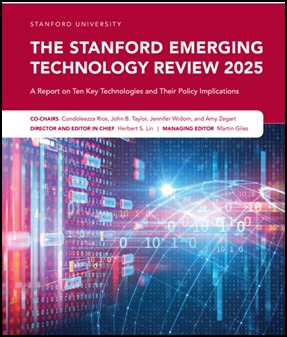La edición 2025 de la Stanford Emerging Technology Review (SETR) ya está disponible y ofrece una visión general completa de cómo diez tecnologías de vanguardia, desde la inteligencia artificial hasta la robótica, están transformando el mundo. Si bien se centra en el punto de vista de los EEUU, puede servir de guía del estado y perspectivas de las tecnologías que a criterio de los autores son más relevantes hoy. El informe, que es una colaboración entre la Institución Hoover y la Escuela de Ingeniería de Stanford y se basa en investigaciones de vanguardia de científicos, ingenieros y expertos en políticas de Stanford, sirve como una guía única sobre las innovaciones en estos dominios clave y sobre qué esperar en el futuro.
In every era, technological discoveries bring both promise and risk. Rarely, however, has the world experienced technological change at the speed and scale we see today. From nanomaterials that are fifty thousand times smaller than the width of a human hair to commercial satellites and other private- sector technologies deployed in outer space, breakthroughs are rapidly reshaping markets, societies, and geopolitics. What’s more, US technology policy isn’t the unique province of government like it used to be. Instead, inventors and investors are making decisions with enormous policy consequences, even if they may not always realize it. Artificial intelligence (AI) algorithms are imbued with policy choices about which outcomes are desired and which are not. Nearly every new technology, from bioengineering new medicines to building underwater research drones, has both commercial and military applications. Private-sector investment, too, simultaneously generates both national advantages and vulnerabilities by developing new capabilities, supply chains, and dependencies and by pursuing commercial opportunities that may not serve long-term national interests.
![]() Fuente: https://setr.stanford.edu
Fuente: https://setr.stanford.edu


